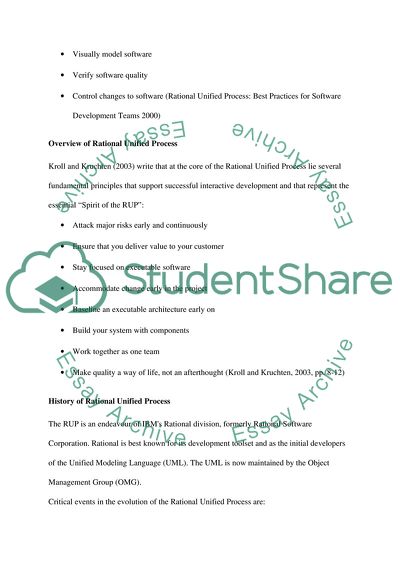Cite this document
(Rational Unified Process Assignment Example | Topics and Well Written Essays - 1666 words, n.d.)
Rational Unified Process Assignment Example | Topics and Well Written Essays - 1666 words. https://studentshare.org/information-technology/1704252-software-engineering-process-research-report
Rational Unified Process Assignment Example | Topics and Well Written Essays - 1666 words. https://studentshare.org/information-technology/1704252-software-engineering-process-research-report
(Rational Unified Process Assignment Example | Topics and Well Written Essays - 1666 Words)
Rational Unified Process Assignment Example | Topics and Well Written Essays - 1666 Words. https://studentshare.org/information-technology/1704252-software-engineering-process-research-report.
Rational Unified Process Assignment Example | Topics and Well Written Essays - 1666 Words. https://studentshare.org/information-technology/1704252-software-engineering-process-research-report.
“Rational Unified Process Assignment Example | Topics and Well Written Essays - 1666 Words”. https://studentshare.org/information-technology/1704252-software-engineering-process-research-report.


